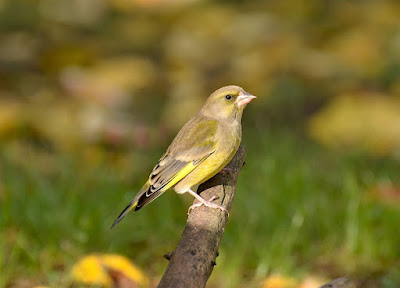We escaped the rain until 1000 this morning and even managed to catch a few birds. I’d met up with Andy at 0730 where in view of the poor forecast of both wind and rain we planned to a little maintenance work on a net ride by clearing overgrow so as to make the ride a little longer.
When I arrived in the dark before Andy there was no wind so I quickly set the usual net for Linnets even though this was unplanned.
Andy did most of the mucky hard graft with a bow saw as I moved a few branches and periodically checked for Linnets. In fact we caught another 14 to make our Linnet autumnal total here in 2021 an impressive 162 with zero recaptures.
We didn’t spend time birding but couldn’t help but notice 10 Little Egrets and good numbers of Greenfinch close to where we worked and also flying over. Another example of what has seems to be an exceptionally good year for Greenfinches and a recovery of the species’ fortunes.
The farmer had mentioned seeing a Green Sandpiper feeding around the edge of his slurry pit so despite the now persistent rain, I went for a look. For sure the sandpiper was still there, bob-bob-bobbing along the muddy edges while finding lots of food.
“Where there’s muck, there’s brass” - and food.
Green Sandpiper
There’s been a few sightings of a Glossy Ibis in the area of Pilling nearby but it seems the sickle bill has done a bunk, watched flying off to the North West on Monday. That’s not to say it won’t be back as these strays have a habit of doing a disappearing act only to be found near the original spot a few days later.
I last saw Glossy Ibis in Menorca a few years ago where in typical fashion several of them fed in shallow marshy pools in the company of Wood Sandpipers, Mallards and Black-winged Stilts.
Glossy Ibis
I fully expect to next see a Glossy Ibis in Lancashire fairly soon but also in Greece in May 2022.
Glossy Ibis breed as close as close to the UK as the Camargue, other parts of France, into central Europe and further east around the area of the Black Sea. Glossy Ibises are especially nomadic during the autumn when the more northerly populations of Europe are fully migratory and travel on a broad front, for example across the Sahara Desert.
Perhaps Glossy Ibis, among the most widespread bird species in the world and one capable of impressive long-distance movements between breeding and wintering areas, could like some of the heron and egret family, become a British breeding species soon?
There’s more rain and wind for a day or three but back soon on Another Bird Blog.
Linking this weekend to Eileen's Saturday Blogspot and Anni's Birding in Texas.


















.jpg)













10 comments:
WOW! >160 and no re-catches...that's darn impressive, Phil!! I went to observe the banding of saw-whet owls and it seemed that once they were released they flew right back into the nets near the call box!...jp (BTW, my blog has a new address: agreenridge.blogspot.com)
Hello Phil,:=) Impressive count of linnets, and sweet image of one. It's also been a good year for Greenfinch here, at least on my balcony!:=) Lovely capture of the Green Sandpiper. Shame you didn't see the Glossy Ibis, perhaps next time. I didn't know you could see them in the north of UK.
All the best.
The weather is wonderful if you like rain, rain and more rain!
Although apparently it's going to be better tomorrow - I hope so!
I like your photograph of the Green Sandpiper, pleased you went looking for him.
Enjoy the rest of the week.
All the best Jan
Congratulations on a terrific Linnet year!
That Green Sandpiper reminds me we must visit our nearby commercial sod farm and hope to see hordes of shorebirds!
As with many water birds, we tend to take our Glossy Ibis population for granted and forget they are a migratory species. Fingers crossed you will spot a breeding pair in the future.
Kudos on getting out in the rain and wind to do what needs to be done.
We are stuck with cool clear mornings and must deal with unfamiliar low humidity lately. Still, the birds seem to like it so we carry on.
Gini and I hope you manage to have fun, no matter the weather!
More quality photo's Phil, you certainly have the knack. Take care.
Mike.
Impressive linnet count. Glossy Ibises are resident birds in one of the lakes in Bangalore. But in other lakes, they arrive during migratory season.
Hello, Phil
It is interesting the Glossy ibis can be found around the world, I have seen them here in my state. I love the cute Greenfinch and the sandpiper. Great photos. Thank you for linking up and sharing your critters and post. Take care, have a happy weekend!
We get excited when we see the Glossy Ibis here too. We see the White Ibis most of the year but then at certain times there will be a Glossy hanging with the flock! I love your photos!
Interesting post. Thank you for working for the birds.
I'm running late today getting my visiting done, out early birding and just getting home! Thanks for linking in and sharing at IRBB!
You saw some great birds!! The unexpected is always more treasured!! Enjoyed your photos I did. And reading your narration!
Post a Comment